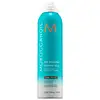What's inside
What's inside
 Key Ingredients
Key Ingredients

No key ingredients
 Benefits
Benefits

 Concerns
Concerns

 Ingredients Side-by-side
Ingredients Side-by-side

Hydrofluorocarbon 152a
Butane
Oryza Sativa Starch
AbsorbentSd Alcohol 40-B
AstringentDisiloxane
Skin ConditioningArgania Spinosa Kernel Oil
EmollientPvp
Emulsion StabilisingWater
Skin ConditioningParfum
MaskingMagnesium Stearate
Cosmetic ColorantDiisopropyl Adipate
EmollientCetrimonium Chloride
AntimicrobialMethoxycinnamidopropyl Hydroxysultaine
UV AbsorberCI 60725
Cosmetic ColorantCI 17200
Cosmetic ColorantButane
Isobutane
Propane
Oryza Sativa Starch
AbsorbentAlcohol Denat.
AntimicrobialTalc
AbrasiveSilica
AbrasiveParfum
MaskingCocoyl Hydrolyzed Keratin
CleansingPlukenetia Volubilis Seed Oil
EmollientHexyl Cinnamal
PerfumingLimonene
PerfumingDistearyldimonium Chloride
Butylphenyl Methylpropional
PerfumingLinalool
PerfumingHydroxyisohexyl 3-Cyclohexene Carboxaldehyde
MaskingCetrimonium Chloride
AntimicrobialTocopherol
AntioxidantButane, Isobutane, Propane, Oryza Sativa Starch, Alcohol Denat., Talc, Silica, Parfum, Cocoyl Hydrolyzed Keratin, Plukenetia Volubilis Seed Oil, Hexyl Cinnamal, Limonene, Distearyldimonium Chloride, Butylphenyl Methylpropional, Linalool, Hydroxyisohexyl 3-Cyclohexene Carboxaldehyde, Cetrimonium Chloride, Tocopherol
Ingredients Explained
These ingredients are found in both products.
Ingredients higher up in an ingredient list are typically present in a larger amount.
Butane is a gas derived from petroleum and natural gas. It is used as an aerosol propellant.
This ingredient is a preservative, antimicrobial, and emulsifier. It is often used in cosmetics for its ability to cleanse, condition, and reduce static.
Cetrimonium chloride is a quaternary ammonium salt, meaning it has a water-soluble structure.
Oryza Sativa Starch is an absorbent and used to mattify the skin. It is a natural carbohydrate and the main component of rice. A more common name for this ingredient is 'rice starch'.
Rice starch is created by steeping broken grains in a caustic soda.
Rice extract has many skin benefits. Read more about rice extract here.
Learn more about Oryza Sativa StarchParfum is a catch-all term for an ingredient or more that is used to give a scent to products.
Also called "fragrance", this ingredient can be a blend of hundreds of chemicals or plant oils. This means every product with "fragrance" or "parfum" in the ingredients list is a different mixture.
For instance, Habanolide is a proprietary trade name for a specific aroma chemical. When used as a fragrance ingredient in cosmetics, most aroma chemicals fall under the broad labeling category of “FRAGRANCE” or “PARFUM” according to EU and US regulations.
The term 'parfum' or 'fragrance' is not regulated in many countries. In many cases, it is up to the brand to define this term.
For instance, many brands choose to label themselves as "fragrance-free" because they are not using synthetic fragrances. However, their products may still contain ingredients such as essential oils that are considered a fragrance by INCI standards.
One example is Calendula flower extract. Calendula is an essential oil that still imparts a scent or 'fragrance'.
Depending on the blend, the ingredients in the mixture can cause allergies and sensitivities on the skin. Some ingredients that are known EU allergens include linalool and citronellol.
Parfum can also be used to mask or cover an unpleasant scent.
The bottom line is: not all fragrances/parfum/ingredients are created equally. If you are worried about fragrances, we recommend taking a closer look at an ingredient. And of course, we always recommend speaking with a professional.
Learn more about Parfum